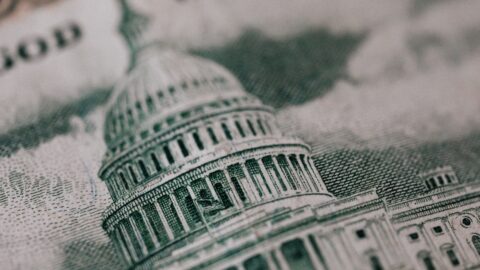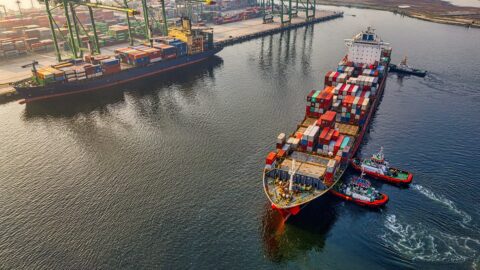It is as difficult to remain invested in a bull market as it is to leave a bear market. After all, investors are risk-averse. Taking into account the four most important categories for the assessment of the attractiveness of asset classes – valuation, liquidity, positioning, and growth – one would conclude that the most important driving factor for the markets builds on the last one.
How can this development be explained?
Growth
Taking into account the four most important categories for the assessment of the attractiveness of asset classes – valuation, liquidity, positioning, and growth – one would conclude that the most important driving factor for the markets builds on the last one..
- Valuation: Whereas the price-earnings-ratios of the equity indices are above average (MSCI World: 22x), the spreads for credit risks are low. The low implicit equity market volatility is particularly remarkable. At below 12%, the volatility index VIX has share price fluctuations in the Standard & Poor’s 500 equity index priced in that fall significantly short of their average value. Also, the real government bond yields for maturities of 10Y are very low (USA: +0.40%; Germany: -1.14%).
- Liquidity: While there is still plenty of liquidity in the markets, the central banks have stopped stimulating the markets with any additional expansive measures (e.g. interest rate cuts or the expansion of the bond purchase programme). In addition, the most important central bank of the world, i.e. the Fed, has been sending signals of a continued moderate cycle of interest rate hikes towards a neutral level of rates (3%). In the ECB Council, the pressure has also been mounting in favour of ending the bond purchase programme. The announcement will be made once the underlying inflation in the Eurozone (currently 0.9% p.a.) is heading sustainably for 2%.
- Positioning: The yields of safe bonds and share prices have increased, while the spreads on corporate bonds have been falling. The positioning of investors is towards “growth”.
- Growth: A majority of economic data such as the global purchasing managers index suggests the acceleration of real global economic growth. In addition, the recovery of two weak areas is particularly remarkable:
a) higher growth of industrial production
b) Ab. signs of an increase in capex growthOn top of this, deflation (i.e. sustainably low prices) is no immediate risk any longer, and inflation is no problem (yet). The signs suggesting a moderate increase of the underlying factors in the industrialised economies have become more plentiful.
Temporary and gradual acceleration
The core questions are therefore: how long will the acceleration last, and to what extent will the economy accelerate? The answers so far: for a short while, and at a gradual rate. Global real economic growth could speed up from 2.5% in 2016 to 3% in 2017.
Recovery
In what phase of the global economic cycle are we currently?
- The global economy produces less than it could potentially produce. This means the so-called output gap is negative; in other words, the global unemployment rate is elevated.
- Economic growth is above the long-term expected value (3% vs. 2.5%).
As a consequence, the negative output gap is shrinking, which means that the global unemployment rate is falling. This is the definition of the phenomenon “recovery”, which has been in place since 2009.
Issues resulting from an economic boom
A situation where the global economy continues to grow above its potential and the output gap turns positive is called a boom phase. While the global economy has not yet reached this point in time, some countries have – above all the USA, the UK, and Germany. However, the issues resulting from such a boom phase, i.e. the risks inherently attached to it, are not (yet) of relevance (overheating, inflation risk etc.).
Rain on parades
The elevated political uncertainty might still rain on the parade. This includes not the least the imminent elections in Europe and the uncertainty with regard to the details of the US economic policies.
Trumponomics
The only thing that is certain is the fact that this will be something new. There are no Bushonomics, Clintonomics, or Obamanomics. The list of the unanswered questions is long: What measures will be presented by the US Administration? Will they raise long-term growth (i.e. potential growth) or only provide a short-term stimulus? Will the measures become more heterodox if growth does not pick up significantly? Will the protectionist elements dominate? If so, will this provoke a trade war? What measures will actually be implemented (i.e. passed by Congress)? When will the effects feed through to the real economy (only next year)? Will the budget deficit soar? Will the monetary policy become less independent? Will there be interventions in case of a further appreciation of the USD?
Higher growth vs. higher uncertainty
The acceleration of the nominal global economic growth is positive for risky asset classes. The elevated level of uncertainty, however, is neither reflected in the market prices nor in the increased sentiment indicators of companies, consumers, and investors. This means that the bull market might last as long as the economic recovery does, the economic indicators rise (i.e. suggest accelerated economic growth), inflation does not turn into a problem, the central banks act cautiously, and no negative events occur on the political front (trade war; the Five Star Movement wins snap elections in Italy …). The tolerance for errors is small.
Legal disclaimer
This document is an advertisement. Unless indicated otherwise, source: Erste Asset Management GmbH. The language of communication of the sales offices is German and the languages of communication of the Management Company also include English.
The prospectus for UCITS funds (including any amendments) is prepared and published in accordance with the provisions of the InvFG 2011 as amended. Information for Investors pursuant to § 21 AIFMG is prepared for the alternative investment funds (AIF) administered by Erste Asset Management GmbH pursuant to the provisions of the AIFMG in conjunction with the InvFG 2011.
The currently valid versions of the prospectus, the Information for Investors pursuant to § 21 AIFMG, and the key information document can be found on the website www.erste-am.com under “Mandatory publications” and can be obtained free of charge by interested investors at the offices of the Management Company and at the offices of the depositary bank. The exact date of the most recent publication of the prospectus, the languages in which the fund prospectus or the Information for Investors pursuant to Art 21 AIFMG and the key information document are available, and any other locations where the documents can be obtained are indicated on the website www.erste-am.com. A summary of the investor rights is available in German and English on the website www.erste-am.com/investor-rights and can also be obtained from the Management Company.
The Management Company can decide to suspend the provisions it has taken for the sale of unit certificates in other countries in accordance with the regulatory requirements.
Note: You are about to purchase a product that may be difficult to understand. We recommend that you read the indicated fund documents before making an investment decision. In addition to the locations listed above, you can obtain these documents free of charge at the offices of the referring Sparkassen bank and the offices of Erste Bank der oesterreichischen Sparkassen AG. You can also access these documents electronically at www.erste-am.com.
Our analyses and conclusions are general in nature and do not take into account the individual characteristics of our investors in terms of earnings, taxation, experience and knowledge, investment objective, financial position, capacity for loss, and risk tolerance. Past performance is not a reliable indicator of the future performance of a fund.
Please note: Investments in securities entail risks in addition to the opportunities presented here. The value of units and their earnings can rise and fall. Changes in exchange rates can also have a positive or negative effect on the value of an investment. For this reason, you may receive less than your originally invested amount when you redeem your units. Persons who are interested in purchasing units in investment funds are advised to read the current fund prospectus(es) and the Information for Investors pursuant to § 21 AIFMG, especially the risk notices they contain, before making an investment decision. If the fund currency is different than the investor’s home currency, changes in the relevant exchange rate can positively or negatively influence the value of the investment and the amount of the costs associated with the fund in the home currency.
We are not permitted to directly or indirectly offer, sell, transfer, or deliver this financial product to natural or legal persons whose place of residence or domicile is located in a country where this is legally prohibited. In this case, we may not provide any product information, either.
Please consult the corresponding information in the fund prospectus and the Information for Investors pursuant to § 21 AIFMG for restrictions on the sale of the fund to American or Russian citizens.
It is expressly noted that this communication does not provide any investment recommendations, but only expresses our current market assessment. Thus, this communication is not a substitute for investment advice.
This document does not represent a sales activity of the Management Company and therefore may not be construed as an offer for the purchase or sale of financial or investment instruments.
Erste Asset Management GmbH is affiliated with the Erste Bank and austrian Sparkassen banks.
Please also read the “Information about us and our securities services” published by your bank.


